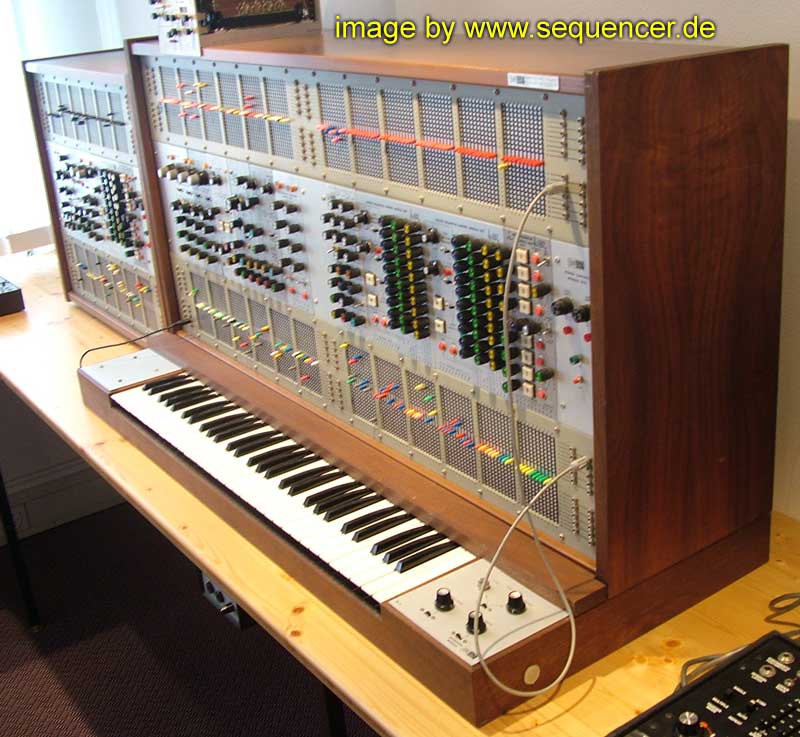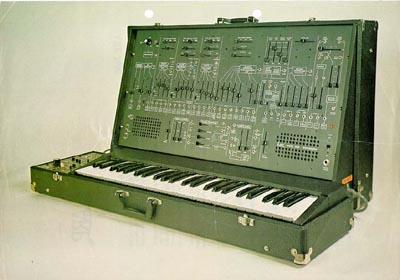In 1969, an electronics engineer who had been interested in electronic music since 1948, Alan Robert Pearlman, founded ARP Instruments, Inc. for $100,000 and began releasing a new type of modular synthesizer to the public. These synths became the main competitor of Moog.

The ARP 2500. Although subtractive like the Moog, the ARPs did away with the need for a jungle of patch cords. ARP’s unique resolution was to put a patchbay matrix on the modules. This patchbay represented the various components in the module. One merely put a pin in that hole and routed the control-voltage through the modules via the placing of the pins. The matrices are visible as a rectangular group of holes and the pins are the little colored pegs. The ARP 2500 was used to generate the special tones on
Close Encounters as well as the musical dialogue between the ship and earth computers.

The ARP 2600 came inside a carrying case and was extremely versatile. The number of musicians that used one is impressive. These include Pete Townshend (heard on Who’s Next), Brian Eno, David Bowie, Tangerine Dream, Arthur Brown, Vince Clarke (Yaz), Depeche Mode, Cat Stevens, Herbie Hancock, Nine Inch Nails, Kraftwerk, John Lennon, Mike Oldfield, Nitzer Ebb, Roger Glover, John Medeski, Joe Zawinul, Kool and the Gang, Stevie Wonder, etc. This was the synth that did the FX on Edgar Winter’s “Frankenstein” as well as providing the voice for R2D2 in Star Wars. The one pictured here belongs to Tony Banks of Genesis.

To rival the minimoog, ARP offered this portable beauty called the Odyssey. I played one once and found it to be a thing of beauty. As little as I knew of working a synth back then I found myself able to come up with some neat stuff in just a few minutes of messing around. Very user friendly.

ARP decided to make a guitar synthesizer by converting the Odyssey from a keyboard to a device with a guitar interface and called it the Avatar. Even compared to today’s MIDI guitar applications, this was a shockingly good device. One guitarist could be a whole band. Unfortunately, few guitarists bought them. The $3000 price tag probably had a lot to do with that. ARP had staked its very future on the Avatar by investing $4 million into the first year model in 1977 and when that failed to pan, ARP could not recoup the losses and ARP Instruments went belly up in 1981.